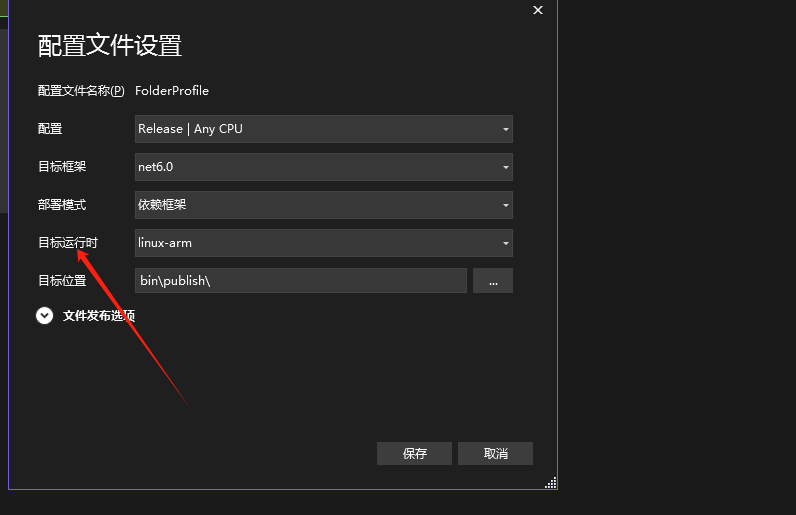C# 条件编译符号(Condition Compilation Symbols)的使用
一、简介
在开发大型项目时,管理不同的代码配置和平台非常重要。Visual Studio提供了条件编译符号来帮助开发者根据不同的条件编译代码。这篇文章将介绍条件编译符号的概念、分类、定义以及使用。
二、什么是条件编译符号
1、定义
条件编译符号Condition Compilation Symbols是一种预处理指令,用于在编译时根据特定条件包含或排除代码片段。
2、使用场景
管理不同的平台。比如Win-x86 、Linux-x64、ARM-x86等。
控制调试和发布版本之间的差异。比如DEBUG、RELEASE。
根据特定条件启用或禁用功能。自定义条件编译符号。
三、条件编译符号分类
条件编译符号分为预定义编译符号和自定义编译符号。
1、预定义条件编译符号
DEBUG: 在调试版本中定义。
RELEASE: 在发布版本中定义。
TRACE: 用于启用跟踪代码。
NET5_0, NET6_0, NET7_0, 等:用于识别不同版本的 .NET。
四、自定义编译符号
自定义条件编译符号可以通过多种方式实现,包括使用 #define 在代码文件中定义、在 .csproj 文件中定义、在 Visual Studio 中设置条件编译符号。
1、使用 #define 在代码文件中定义
在代码文件的开头使用 #define 指令可以定义条件编辑符号。这种方法适用于局部定义,且仅对当前文件有效。
#define FEATURE_X using System; class Program { static void Main() { #if FEATURE_X Console.WriteLine("Feature X is enabled."); #else Console.WriteLine("Feature X is disabled."); #endif } }
2、在 .csproj 文件中定义
如果需要全局定义条件编译符号,可以在项目文件(.csproj)中进行定义。这种方法适用于项目范围内的定义,且在不同的构建配置中都可以使用。
打开项目的 .csproj 文件,并添加以下内容:
<PropertyGroup> <DefineConstants>FEATURE_X</DefineConstants> </PropertyGroup>
如果有多个条件编译符号,可以用分号分隔它们:
<PropertyGroup> <DefineConstants>FEATURE_X;FEATURE_Y;DEBUG</DefineConstants> </PropertyGroup>
3、在 Visual Studio 中设置条件编译符号
你还可以通过Visual Studio的项目属性界面来设置条件编译符号。Dubug自定义符号只有在Debug模式下才生效,Release自定义符号只有在Release模式下才生效。
步骤:
- 右键点击项目 -> 选择“属性”。
- 在左侧选择“生成”。
- 在“生成”选项卡中,你会看到“条件编译符号”输入框。
- 在输入框中输入你的符号,多个符号用分号分隔。

五、为特定环境来定义条件编译符号
你可以为不同的环境(例如 Debug 和 Release)来定义不同的条件编译符号。比如上一节的第3小节,当我们在Debug和Release环境中定义了不同的条件编译符号后,将会在.csprog文件中生成如下的标签。主要实现是在.csprog中定义PropertyGroup标签,并通过Condition条件来选择不同的PropertyGroup标签。
<PropertyGroup Condition="'$(Configuration)|$(Platform)'=='Debug|AnyCPU'"> <DefineConstants>$(DefineConstants);VS_DEBUG</DefineConstants> </PropertyGroup> <PropertyGroup Condition="'$(Configuration)|$(Platform)'=='Release|AnyCPU'"> <DefineConstants>$(DefineConstants);VS_RELEASE</DefineConstants> </PropertyGroup>
Condition属性允许你根据一些预定义的变量来设置条件编译符号和其他项目属性。这些变量通常由 MSBuild 提供,可以用于控制项目文件中的各种设置。
常见的 MSBuild 变量
$(Configuration): 当前的构建配置(例如 Debug 或 Release)。
$(Platform): 当前的目标平台(例如 AnyCPU、x86、x64)。
$(TargetFramework): 目标框架(例如 net6.0、net5.0、netcoreapp3.1)。
$(RuntimeIdentifier): 当前的运行时标识符(例如 win-x64、linux-x64、osx-x64)。
示例 根据运行时标识符:
<!-- Windows 平台 -->
<PropertyGroup Condition="'$(RuntimeIdentifier)'=='win-x64' Or '$(RuntimeIdentifier)' == 'win-x86'">
<DefineConstants>WINDOWS</DefineConstants>
</PropertyGroup>
<!-- Linux 平台 -->
<PropertyGroup Condition="'$(RuntimeIdentifier)' == 'linux-x64'">
<DefineConstants>LINUX</DefineConstants>
</PropertyGroup>
<!-- macOS 平台 -->
<PropertyGroup Condition="'$(RuntimeIdentifier)' == 'osx-x64'">
<DefineConstants>MACOS</DefineConstants>
</PropertyGroup>
<PropertyGroup Condition="'$(RuntimeIdentifier)'=='linux-arm' Or '$(RuntimeIdentifier)' == 'linux-arm64'">
<DefineConstants>LINUX_ARM</DefineConstants>
</PropertyGroup>
注意:$(RuntimeIdentifier)当前的运行时标识符会根据发布时我们选择的运行时来编译代码,比如我们选择的win-x64,编译时就会将WINDOWS这个条件编译符号编译到执行文件中,其他的比如LINUX_ARM将不会被编译到执行文件中,也就没法使用LINUX_ARM这个编译符号。Condition条件只是取决于编译选项,而非运行的实际环境。如果要判断实际运行环境可根据其他的方法来判断。

六、在代码中使用条件编译符号
1、#if、#endif 结构
简单条件判断
#if DEBUG Console.WriteLine("Debug is enabled"); #endif
2、#if、#else、#endif 结构
#if DEBUG Console.WriteLine("Debug is enabled"); #else Console.WriteLine("Debug is disabled"); #endif
3、 #if、#elif、#else、#endif 结构
#if DEBUG Console.WriteLine("Debug is enabled"); #else Console.WriteLine("Debug is disabled"); #endif
4、 条件编译符号支持多符号的与或非操作
#define MYTEST using System; public class MyClass { static void Main() { #if (DEBUG && !MYTEST) Console.WriteLine("DEBUG is defined"); #elif (!DEBUG && MYTEST) Console.WriteLine("MYTEST is defined"); #elif (DEBUG && MYTEST) Console.WriteLine("DEBUG and MYTEST are defined"); #else Console.WriteLine("DEBUG and MYTEST are not defined"); #endif } }




 浙公网安备 33010602011771号
浙公网安备 33010602011771号